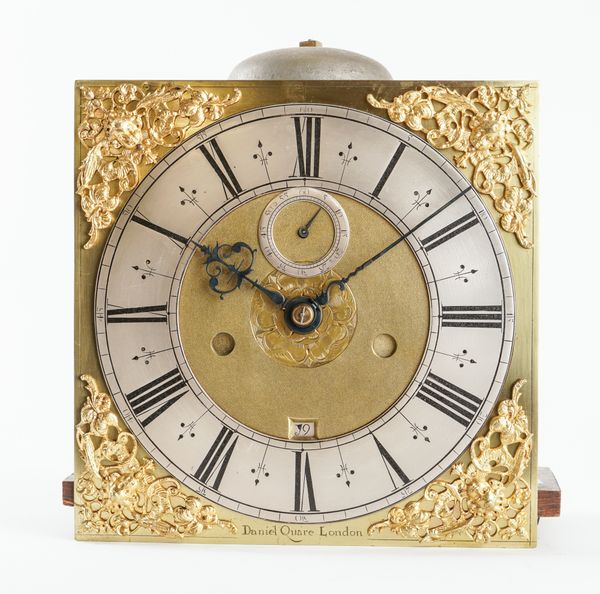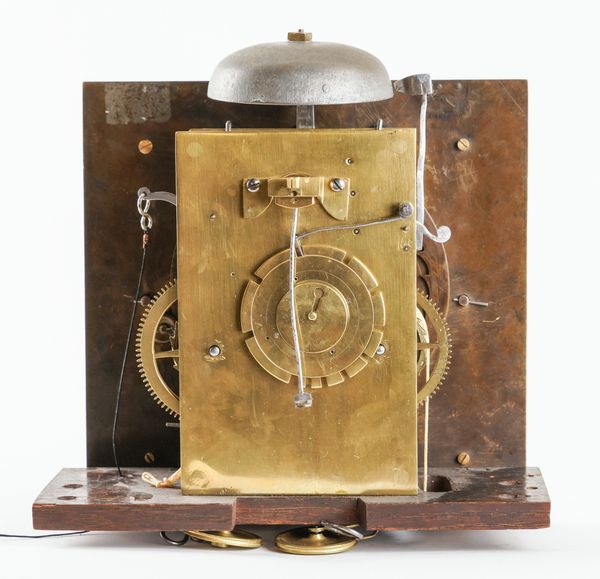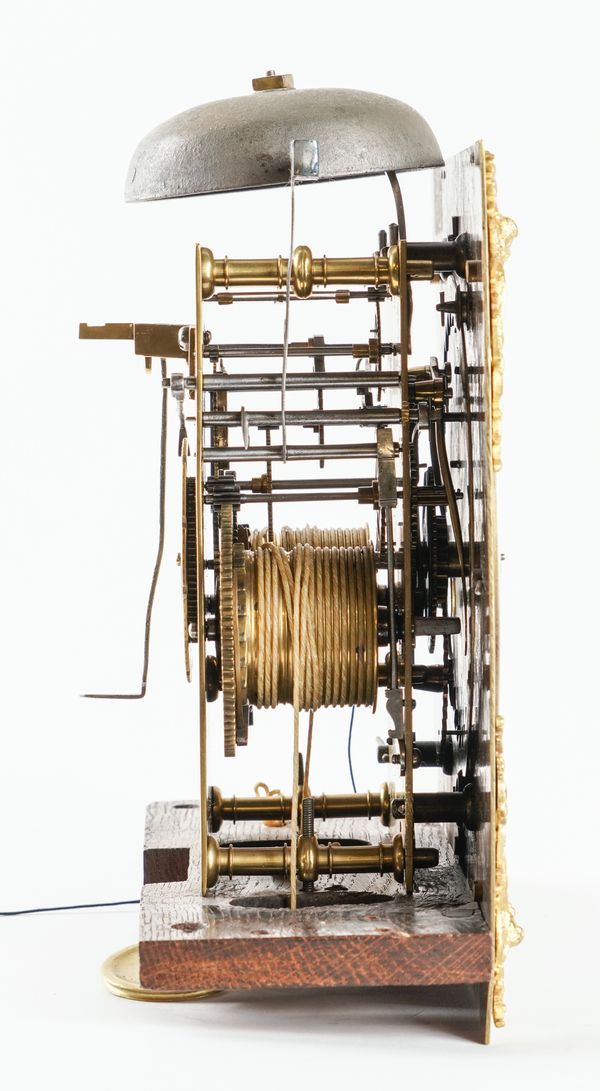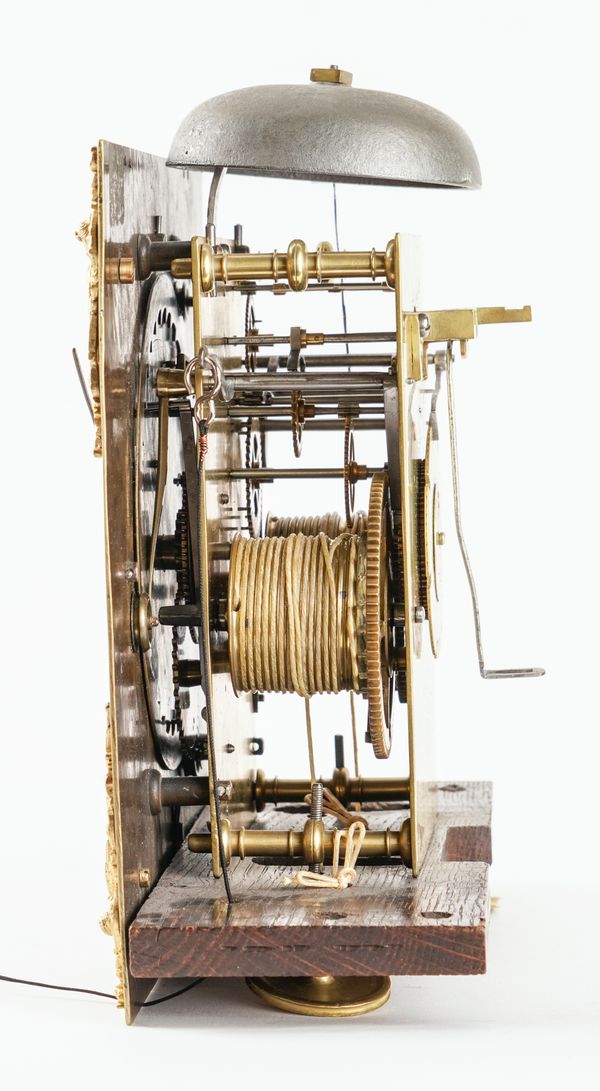A CHARLES II WALNUT, OYSTER VENEERED AND MARQUETRY LONGCASE CLOCK WITH 10” DIAL AND BOLT-AND-SHUTTER MAINTAINING POWER
The movement signed Daniel Quare, London, the case associated, circa 1680
| Estimate: | £7,000 - £10,000 |
| Hammer price: | £7,000 |
The hood with a moulded cornice above a glazed door, flanked by handed columns, above the trunk inset with a panel door, oyster veneered and with two small foliate spandrels and two larger foliate marquetry panels, the sides with oyster veneered panels, the base with a marquetry panel of a vase and flowers, on bun feet; the 10in square brass dial, signed on the dial plate Daniel Quare, London, with cherub mask and foliate spandrels, silvered chapter ring enclosing a finely matted centre, engraved with a rose, blued steel hands, narrow seconds subsidary and calendar aperture, the twin train movement with five knopped and finned pillars, bolt and shutter maintaining power, latched to the front plate, anchor escapement and external countwheel strike on a bell, case and movement associated
193cm high
PROVENANCE: Bonhams, London, 11 July 2018, lot 65.
A marquetry clock, with virtually identical dial and movement by Quare, was sold at Bonhams, London, 13 December 2017, lot 12.
Daniel Quare (d. 1724), one of England's greatest clockmakers from the 'golden era' of English Clockmaking. George I offered him the post of the King's watchmaker. However: his Quaker faith made him unable to swear an oath of alligence. Nevertheless the King told him that he could visit at any time, so his nickname 'Quare of the back stairs' was coined as the Yeoman of the Guard were instructed that he could only use the back stairs.
His commercial success can be measured in part from the guest list of his daughter, Anne's wedding, which included envoys from many of the Royal houses of Europe.
With two brass bound weights and its pendulum. The clock is in good condition and was running prior to consignment.
The dial has two pairs of filled holes on the top edge of the dial plate (perhaps once holding an arched panel as a later addition?). The movement is clean and the steel work is clean and bright. The bolt & shutter mechanism is likely a replacement, well done.
The case has been restored. The base appears to have been reconstructed, utilising the marquetry panel and re-laying it. The sides and front border are reveneered. The backboard is 90% complete and runs 173cm in length. The cheeks have been reduced by approx 10mm. There is no indication it originally had a rising hood. There is no sound fret to the hood.
The clock presents very well and with the 10in dial and the proportions of the case it has a charming presence.





